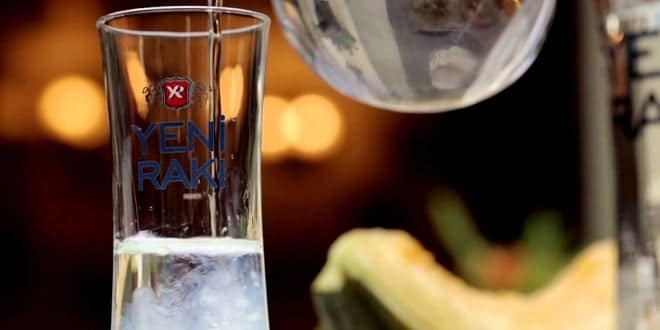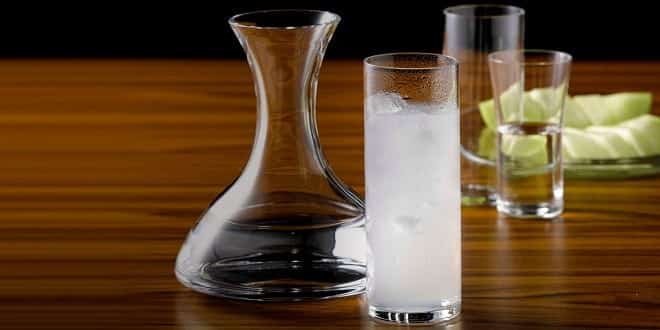Fermentation Lab Reports > Rakı
Raki was first produced from the residue of grapes left over from wine making. When a shortage of residue started, spirits from abroad were imported and processed with aniseed. Selected raisins rich in sugar are pressed and mashed by automatic mincing machines to dliute the sugar in the raisins in water. Then , to eliminate the harmful micro-organisms in this mixture of sugary water and pressed raisins which is called “MASH”, a sterilisation pğrocess is applied.
The ‘MASH’ is then put into the fermentation containers and kneaded with yeast to start the process of alcohol formation. To obtain ethyl alcohol after the fermentation process, distillation, and soon after, brewing passing though these colons, the ethyl alcohol is separated from the mashed raisins and the sugary water, and passes over to the exit colon. At the exit point the degree of the alcohol of the ‘souma’ is 93°-94°. By the addition of drinking water, the alcohol degree is dropped down to 45°, when aniseed seeds are added , and by directing steam on it, the distillation process is started. after boiling, the stream turns into liquid while passing through the cold pipes, and Raki is produced. After distillation, the boilers are opened , and the aniseed remains are taken out.
The alcohol degree of medium produce Raki is between 70°-80°. The degree is dropped down to 45°-50° by the extinguishing method, and according to the type of Raki, 4-5 grams of sugar per litre is added. after that, the Raki is rested in oak barrels for 60-70 days, then it is taken out to the market for sale.
…



